2018 Marin Rift Zone 3 Bike
(discontinued)
| Where To Buy | |||
|---|---|---|---|
Free shipping on orders over $50 (continental U.S. only).
International shipping available. Some exclusions apply. |
Free shipping on orders over $50 (continental U.S. only).
International shipping available. Some exclusions apply. $1,799.00
|
||
Free shipping on orders over $50 (continental U.S. only).
International shipping available. Some exclusions apply. |
|||

The day of the confused bike is upon us. So many bikes and so many brands are trying to force the perfect do-it-all bike down our throats, and the result is a bike that may not actually excel at any one thing. The reality is that many of us aren’t trying to ride everything on a single bike. We have our go-to trail rides that fall within a specific range of conditions. On special occasions, we’ll travel to some place new to ride something different. The Marin Rift Zone 3 is confident in its identity and knows it is not a do-it-all bike. It is a bike who longs to eat up fast, fun, flowy singletrack while reminding us that Dual Slalom is the greatest MTB race format.
At just $2,649, the Rift Zone 3 is at the top end of a three-bike budget line of 120mm-travel 29ers in the Marin family. The Rift Zone 2 ($1,949) and Rift Zone 1 ($1,599) are its less expensive, less feature-filled siblings. We’ve been on the Rift Zone 3 for six months, in all conditions, from winter into summer, and we’re more than pleased with our experiences on this wallet-friendly workhorse.
Marin Rift Zone 3 Highlights
- Series 3 6061 butted and hydroformed aluminum frame
- 120mm travel front and rear
- Multitrac Suspension platform
- Internal cable routing
- S, M (tested, 31 pounds), L and XL sizes
- 67.5-degree head angle
- 74.8-degree virtual seat angle
- 45mm stem
- Shimano SLX 11-speed drivetrain (11-46t cassette)
- Price: $2,649

Strengths
| Weaknesses
|



Initial Impressions
The first thing we noticed about the Rift Zone 3 was that the fork travel matched the rear travel; 120 up front and out back. The fork wasn’t 130mm (or longer) trying to give us a false expectation that maybe, just maybe, this bike could border on enduro usage. Combine the 120mm fork with the visual of the flat handlebar, and it was clear that we were looking at a bike geared more toward the XC end of terrain rather than the enduro side. The construction of the 2.4 WTB Trail Boss tires (fast-rolling and light casing) was the final nod that the Rift Zone should be looking for sprints through meandering, pumping hills, not steep, gnarly rock gardens to euro-switchbacks. The stubby 45mm stem provided a twinkle in our eye that maybe our long-lost Dual Slalom dreams could still be tapped aboard the bike. We weren’t too worried about the capabilities of the suspension, as the RockShox Revelation RC fork and metric Deluxe RT Debonair are worthy and fairly common in this price range. The Shimano SLX 11-speed drivetrain and Deore brakes piqued our curiosity, having never ridden on either. Would the 11-46t cassette be enough after we've gorged on the feast of the 50t SRAM Eagle drivetrain for the last few years?
On the Trail
We first rode the Rift Zone in winter conditions near Boise, Idaho. The trails, free from snow, had to be ridden in the morning while they were still frozen before the thaw turned them into peanut butter. Weirdos, desperate for some pedal time, always try to ride when it’s peanut buttery. Like, you can see they get 50 feet into the trail, tires fully globbed up, nearly impossible to continue, but for some reason, they keep going, riding entire loops like this. The bright side of this head-scratching fiasco is that the normally mindless, buff, feature-free trails ride like a frozen, cross-rutted root section the next morning, providing plenty of sketchiness through their ice-hardened tracks.


Tires
Our first outing on the Rift Zone 3 was through these frozen, rutty trails and we were given some interesting feedback. Most of that feedback was from the tires. The fast/light construction meant that there was very little damping from the rubber, and we had that “beach ball” experience; the same experience we’ve noticed any time we’re on light-casing XC-ish-type tires. Despite the bounciness and reboundy feel (it’s tempting to lower pressures, but then cornering support is lost), the tires worked with the suspension to grip well and they rolled fast. Through the spring, when the dirt was soft and not quite packed in yet, the traction wasn’t quite there in the sandy, clay conditions as the lugs were a bit too low profile. When the rainy season was past and the trails firmed up leaving dry, sandy-to-hard-packed summer conditions, the tires ruled for the intended use and we were in tune with the *reboundiness* of the construction. The 2.4 Trail Boss tires were very predictable in natural singletrack corners. They're free of any float zones, they roll quickly, but they have enough knob to slow the bike down when braking. In high-G-force berms or on jump faces, a bit of squirm is part of the game with the light construction of the tires, but we grew used to that trait and appreciated how they responded when on the pedals.
Climbing
The climbs on the Rift Zone 3 were never a chore and nicely efficient. We didn't have that feeling of "let's just get to the top so we can descend," aboard the bike. The seat angle is right for ascending (74.8-degree virtual), and the head angle, while a sinful-to-some 67.5-degrees, keeps the front in control without that floppy, slacked-out feeling when things get steep. Reach, size and ergonomics of the medium were on point for our 5'9" tester. We’ll get to the 11-46t gearing below when we discuss drivetrain.


Fast, Flowing Singletrack
When not on an extended climb, naturally contouring up-and-down, pump-heavy trail is extremely fun on the Rift Zone. You know the kind of trail that we all dreamed about before the advent of machine-built bike park groomers full of too many repetitive berms? That's the happy place for the Rift Zone. Natural, hand-built mountain singletrack with a modest pitch and swoopy turns? The Rift Zone's happy place. A product of the grassy, oak-dodging, narrow ribbons of trail near Marin’s Petaluma headquarters, the Rift Zone is hungry to move. Keeping momentum is something to be embraced, not loathed, aboard the Rift Zone as pumping generates speed thanks to the travel amount and progressive suspension design. One of our local trails beckoned the bike every time we went out to ride. The trail is hybrid of a new-school rut track with arcing old-school slalom track corners traversing a mellow grade. We couldn't ride this trail enough aboard the Rift Zone. The flat bars, the short stem and the head tube angle make the bike agile, keep the rider weighted nicely over the front tire, allow for quick direction changes and reward body English in the turns.


Wheels
Maximizing speed with more pedaling when the trail opened up is rewarded...once the freewheel engages. The Formula hubs are solid and roll fast enough, but the lack of engagement is noticeable when trying to put pedal strokes to good use. There’s a lag then a harsh thud as the ratchet is activated. It’s not really a surprise at this price-point, but must be considered on the trail. The 29mm-wide Marin rims aren't fancy, but they leave the option to run a tire bigger than the stock 2.4-inch rubber provided. You’ll probably be stuck going wider only up front, however, as the clearance out back won’t allow for much more than what’s provided with the stock 2.4's. Let's be clear that we see no need to use wider tires on the Rift Zone 3.

Suspension
On our 120mm-travel 29ers, we keep the rebound peppy for responsiveness. Our preference worked with the Rift Zone. The MultiTrac suspension platform is a progressive linkage-driven single pivot (faux bar). It's tried and true, and the RockShox suspension was tuned well for the bike out of the box. There's not a lot to worry about. Out back, set spring rate and tweak rebound. Up front do the same on the Revelation RC and sort through 5 simple compression clicks. This may not be enough for serious bike nerds, but for the target audience of this bike, 5 clicks provides a great, simple introduction to compression adjustment. New riders can’t get too in the weeds with micro-adjustments. Our settings varied between 2 to 3 clicks from fully open, and the fork performed as we’d expected and hoped; not mind-blowing race-level performance, but definitely not a dud or a component that gave us second thoughts on the trail.


We flipped the climb switch (Firm Pedal Platform lever) on the Deluxe RT Debonair just to say we tried it, but we never intentionally used it. At just 120mm, the pedaling platform almost seems more like a novelty for the features list than something really worth having on the bike.
The drops we hit for the sake of hucking did bottom the bike, but not in an alarming manner. Adding more progression with tokens and spacers is an option for really aggressive riders. This could make the bike even livelier on the trails or make it more capable for terrain with heavy compressions.
Aggressive Terrain
When the descents were rough and steep, the Rift Zone could handle the abuse, but it was ready to find its way back to smoother surfaces. No 120mm bike is going to turn rock gardens into plate glass, but the lightweight tires, 67.5-degree head angle and the lower-rise bars meant that paying attention through technical terrain was a must. The bike would get bounced around a bit with that bucking bronco characteristic, making the ride exciting, but not totally composed. All the things that make the Rift Zone shine in the flowy, undulating singletrack, hold it back in aggressive, rough terrain. But, like we said at the beginning of this review, this bike isn’t pretending to be an enduro bike, and we feel its ability to survive the occasional piece of gnar is sufficient.




Drivetrain
We were pleasantly surprised with the consistency of the Shimano SLX / Deore drivetrain. Now that Shimano has released their new 12-speed version of SLX, our 11-speed system may feel dated, but never, not one time, did it fail us with a mis-shift or problem. During the entire duration of the test (and totally for testing purposes, not because we’re lazy or anything), we only washed the bike once and lubed the chain once. Once in six months. To this day, shifting is on point, crisp and accurate. At the shift lever, we don’t get the feather-light reaction of 12-speed systems, but never worrying about shifting is a great thing, as is the absence of having to hyper-fine-tune the drivetrain for accuracy. Set it. Forget it. Ride it.



We’ve even become mildly disappointed when going back to SRAM shifters on our other bikes because the Shimano controls allow shifting to a harder gear by pulling back on the upper shift lever with the index finger in addition to the option of a forward push with the thumb. If this feature didn’t exist, we wouldn’t miss it, but once used to the controls, it’s a nice little touch we appreciate.
While most trails in our loop don’t require the use of granny gear or that 50t on Eagle drivetrains, we put the Rift Zone up some steeps and some longer climbs just to see if that 46t would be enough. When the steep climbs were short and the end was in sight, the 46t was manageable, and it was easy to suffer through a bit of under-gearing. When we were shelled and just wanted a long, steep climb to end, that 46t started to feel noticeable, leaving us wishing for more range. We’d have to assume that the new Shimano SLX may fill this void on future budget Marin offerings.


Our only mechanical issue with the entire bike was with the FSA V-Drive crankset. The crank bolt came loose a few times. We’d snug it up, ride and have to snug it up again before the next pedal. The V-Drive uses a 10mm hex key which we realized is not common on MTB multi-tools. In fact, only one of the three regular hex key sets we have in our toolbox has a 10mm. We never lost ride time or sleep over it, but keeping an eye on this bolt, carrying a 10mm or adding some Loctite is a good idea.
Brakes
The Shimano Deore brakes are fine in terrain where the Rift Zone excels.That terrain isn’t full of steep descents or hard-on-the-brakes moves that mean slowing down from race speeds quickly. We have one sharp, almost-180-degree corner at the end of a fast straightaway on one of our local trails. The first time coming into this turn on the Marin, we blew the corner because we braked when we usually brake. Unfortunately, our normal braking point was too late with the Deore stoppers, and we flew right past the corner. The front tire was still gripping, but the brakes weren’t as powerful as the GUIDES on our other bike. Now that we’re aware, life is dandy around that corner because we plan ahead. If you’re a heavier rider or someone who dares to regularly ride the Rift Zone on steep trails where stopping quickly from speed is required, you’ll probably want more powerful brakes. With all that said, the lever does feels nice on the fingertips, and while a hex key is required, adjusting lever position was a no-brainer.


Trans-X Dropper Post
Finally, last but not least, all hail the Trans-X Dropper post. The post is simple, cheap, easy to set up and has never given us anything to complain about. We've had it on other bikes before the Marin without a hiccup. It's the unsung hero of dropper post world, doing work without the need for fame. Drop is 120mm which may be short for taller riders on Large or XL sizes. It was just right for our stubby-legged tester on the medium. Size Small Rift Zone 3 bikes get a 100mm dropper.


Things That Could Be Improved
As noted above, there are a few minor short-comings with the Rift Zone 3. These complaints are partially because we’re spoiled with top-of-the-line bikes to ride on a regular basis and the Marin is a $2600 complete. The rear hub engagement is slow, wasting a bit of pedal stroke before clunking itself into position. The FSA crank bolt is an odd size (10mm hex key) and loosened on us more than once. Finally, the brakes could use a power upgrade if the bike is taken to the steeps or for the bigger rider. None of these are deal-breakers to us considering the bike's budget price.

Long-Term Durability
We’ve been on the Marin Rift Zone 3 for nearly 6 months without a creak, a missed shift, a dropped chain or any mechanical issue other than a loose crank bolt - and that’s with only one bike wash and one chain lube session. We try to be dicks to our bikes on purpose sometimes to see how they accept the challenge. When you consider the Rift Zone may be someone’s first mountain bike, they may treat it with the same lack of maintenance respect because they may not know better. The Rift Zone has accepted our neglect challenge and came out on top. No worries or doubts from us in the durability department with the Marin.
What’s the Bottom Line
Is it strange that we have two other $5,000 bikes in the garage, yet we often choose the Rift Zone 3 for our local trails? It’s true. Our local trails are generally buff, undulating and full of turns which is exactly what this Marin is made to shred. If you’re a first-time mountain biker asking “which bike should I buy,” the Rift Zone 3 should be at the top of your list if you plan on pedaling fun, flowing singletrack trails. If you’re an experienced mountain biker looking to diversify the quiver with a shorter-travel 29er that won’t break the bank, put the Rift Zone in your cross hairs. Capable and fun, it’s a great baseline for upgrades along the way or for years of ripping in its stock configuration. Don’t expect to throw a 140mm fork and 2.5 DH tires onto the Rift Zone to create a mini enduro bike. That’s not why the Rift Zone exists. The Rift Zone knows its place in this world and is quite happy with where it belongs; speeding and pedaling through the swooping rollercoaster turns of your favorite natural singletrack.
Marin Bikes can be purchased from your local dealer or from Jenson USA.

About the Reviewer
Shawn Spomer – Age: Don't Ask // Years Riding: 23 // Height: 5’9” // Weight: 194.237-pounds
Shawn is Content Director of Vital MTB. When he's not avoiding Instagram like the plague, he's trying to grill guests on The Inside Line podcast or get laps on the trails near Boise, Idaho. A former race videographer and photographer, he started Litter "Mega"zine in 2003 and has somehow stuck around to make a living in this industry.
Specifications
| Where To Buy | |||
|---|---|---|---|
Free shipping on orders over $50 (continental U.S. only).
International shipping available. Some exclusions apply. |
Free shipping on orders over $50 (continental U.S. only).
International shipping available. Some exclusions apply. $1,799.00
|
||
Free shipping on orders over $50 (continental U.S. only).
International shipping available. Some exclusions apply. |
|||






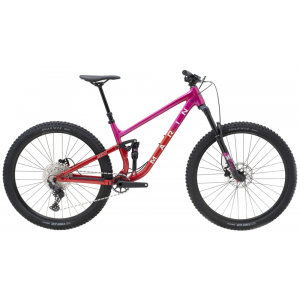
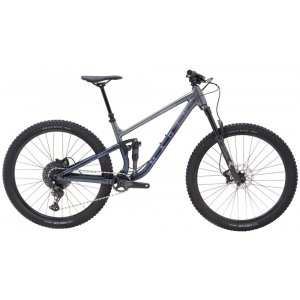
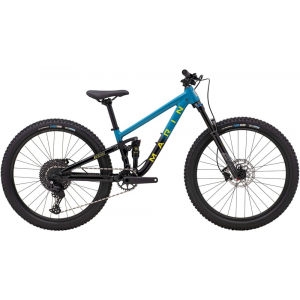
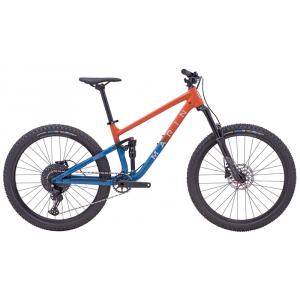

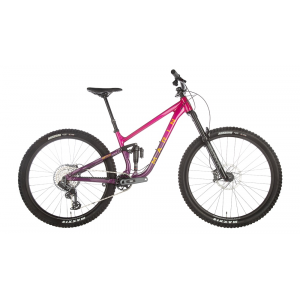

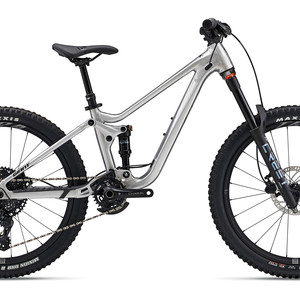
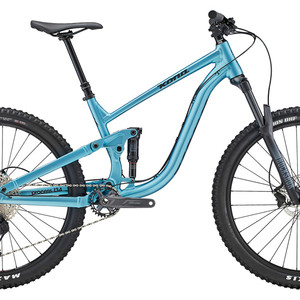


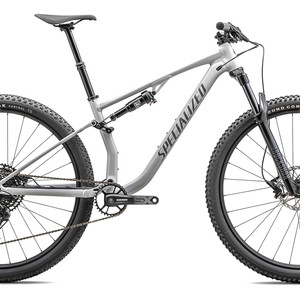












9 comments
Post a reply to: Long-Term Test: Marin Rift Zone 3 29er Trail Bike